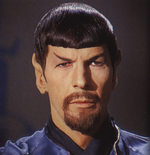This is the discovery from last summer:
The universe has a huge hole in it that dwarfs anything else of its kind. The discovery caught astronomers by surprise.
The hole is nearly a billion light-years across. It is not a black hole, which is a small sphere of densely packed matter. Rather, this one is mostly devoid of stars, gas and other normal matter, and it’s also strangely empty of the mysterious "dark matter" that permeates the cosmos. Other space voids have been found before, but nothing on this scale.
Astronomers don’t know why the hole is there.
Now we turn to Dr. Laura Mersini-Houghton, a theoretical physicist and cosmologist at the University of North Carolina (Chapel Hill). [SIDENOTE: I think it’s just great that she can do physics and manicures at the same time!].
She and her team have looked into this giant hole in the universe dealeo, and they think they know what’s going on:
The Mersini-Houghton team, however, says it is another universe at the edge of our own. They looked at string theory for the explanation. In string theory, 10500 universes (or string vacuums) are described, each with unique properties. They contend that the largeness of our universe is due to its vacuum counterbalancing gravity. This counter-gravity of the vacuum keeps our universe very large (rather than shrinking due to gravity)—larger than the other multitude of universes. The team says that smaller universes are positioned at the edge of our universe, and because of this interaction they are seen by us.
The team predicts that another giant void will eventually be found. The already found void is in the northern hemisphere. They contend another one will be found in the southern hemisphere.
Okay, I’m not sure I follow that. You see, I thought the "universe" definitionally meant, well, everything. There can’t be another universes "at the edge of our own". Fortunately, a Slate article from a few years back addresses this:
Before getting to why you should or should not believe in multiple universes, there’s a semantic point we ought to deal with. If the universe is, as the dictionary has it, "all existing things … regarded as a whole," then isn’t it true by definition that there is only one such thing? (After all, uni- is built right into the word itself.) Well, yes. But when physicists and philosophers talk about different space-time domains being "two universes," what they generally mean is that those regions are 1) very, very large; 2) "causally isolated" from each other (meaning that an event in one cannot have an effect in another); and hence 3) mutually unknowable by direct observation (since observing something means causally interacting with it). The case for saying the two domains are separate universes is further strengthened if 4) they have very different characters: if, say, one of them has three spatial dimensions (like ours), whereas the other has 17 dimensions. Finally—and here is the existentially titillating possibility—two domains might be called separate universes if 5) they are "parallel," meaning that they contain somewhat different versions of the same entities, like your own alter ego.
 Now, thanks to my Star Trek watching days, I can understand the concept of parallel universes. It’s the universe where everything is exactly like it is here in this universe and there’s a duplicate of each one of us, except we wear slightly different clothes, and the men wear goatees.
Now, thanks to my Star Trek watching days, I can understand the concept of parallel universes. It’s the universe where everything is exactly like it is here in this universe and there’s a duplicate of each one of us, except we wear slightly different clothes, and the men wear goatees.
Of course, that’s just one possible "parallel" universe. I prefer to think of a parallel universe which is just the same as ours, except everyone, including animals, drives an AMC Pacer.
Anyway, this whole thing hurts my head.

